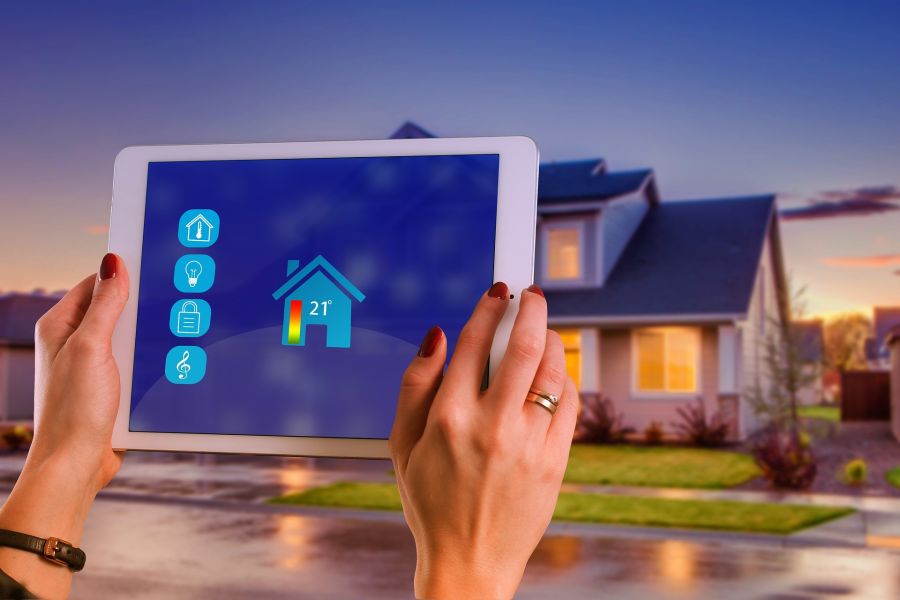Now, we are living in the fast paced world where the technologies keep altering every aspect of our lives. Smart building technology is among the most exciting developments change the areas of human life and community turnaround. From energy efficient windows in King City to high security, smart buildings curtail our lives and make things more sustainable, comfortable, and connected. As cities like King City embrace these technologies, the implications are far-reaching, affecting property value as well as energy consumption patterns within the area.
The Rise of Smart Building Technologies
Integration of diverse automated systems into building infrastructure makes possible real-time data acquisition, monitoring, and control. Thus, smart building technologies include at least advanced heating, ventilation, and air conditioning (HVAC) along with smart lighting, energy-efficient windows, and automated security systems. The aim is a more efficient, responsive, and sustainable living or working environment.
The integration of Internet of Things (IoT) devices is a salient aspect of smart buildings, as it enables residents or businesses to remotely control a variety of systems within their buildings. The features offered by smart technology ensure that users can customize their environment with great ease, whether to set the thermostat, turn lights on or off, or oversee security systems; this enhances convenience and comfort greatly.
The Role of Energy-Efficient Windows in Smart Buildings
Energy efficiency, which is the keystone to smart building technologies, is becoming an important focal point for homeowners, business owners, and local governments. In a suburban environment like King City, where parks and residential areas abound, the introduction of energy-efficient aspects such as smart windows became a pivotal one.
Temperature regulated energy efficient windows in King City reduce the need for heating and cooling. Blocking excess heat during summer and retaining warmth in winter, these windows maintain a comfortable indoor climate throughout the year. Energy efficient windows are becoming the most popular choice among homeowners in King City for both economic and environmental benefits. They help save energy and carbon by broadening the benefits into the larger role of the community in sustainable urban development.
Smart windows can also be automated to adjust their tint or opacity according to the time of day or outside weather conditions. This brings increased comfort with respect to the amount of natural light entering a building while contributing to energy savings by reducing reliance on artificial illumination.
Environmental and Economic Benefits
Healthier Living, greener future. This really-good conversion took place between smart buildings and localities. It produced several environmental and economic benefits. Due to lower energy consumption, smart buildings contribute to less greenhouse gas emissions and a more sustainable future. Smart windows and optimized heating and cooling systems are used in homes, which will consume energy less, resulting in lower environmental impact.
So, they can bring down significantly the bills of utilities in homes or even businesses. In ways where energy costs soar, it would help an owner in household or business have a good advantage when controlling and optimizing energy consumption. Energy reduction will eventually save the owner some long-term money, which in turn will be beneficial for individuals and economies in their localities.
It assists municipalities in fulfilling their sustainability objectives on a larger scale and alleviate loads of the local infrastructure. Due to lesser demands on heating, cooling, etc., lesser resources are being used in turn reducing the demand for electricity and water de-stressing the power grids and water treatment facilities.
Enhancing Community Engagement and Security
In addition to the ecological and economic advantages, smart building technologies engage communities and provide security. Many smart buildings implement sophisticated security measures, such as motion detectors, video surveillance, and smart locks. The safety of residents or businesses is assured by these technologies, thereby allowing them to feel secure within their community.
Video doorbells and neighborhood surveillance systems promote trust and fellowship among neighbors in a City where residents often cherish the close-knit atmosphere of a family-friendly setting. These innovations give an impression of safety for children, the elderly, and families, thus allowing them to feel more comfortable with their community.
Furthermore, the data collected by smart building systems can also be converted into measurable improvements in city planning and infrastructure. Information that local governments can use to demand energy efficiency and traffic patterns in their municipalities can derive waste management from common community benefits from data-driven decision -making.
Final Thoughts
Smart-building technology continues to evolve toward the benefit of local communities. In King City, for example, the combination of energy-efficient windows, smart HVAC systems, and automated security systems will redefine the essence of living, working, and intertwining with the environment. This technology brings plenty of advantages, such as energy efficiency, environmental sustainability, and quality of life. As communities adopt more of these smart technologies, we expect to have an entire future filled with connectivity and sustainability, wherein technology will interweave within every aspect of our lives.
The post The Impact of Smart Building Technologies on Local Communities appeared first on IntelligentHQ.
Read more here:: www.intelligenthq.com/feed/




